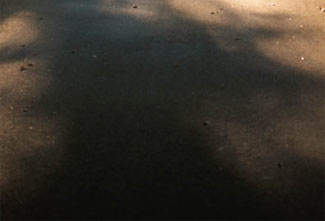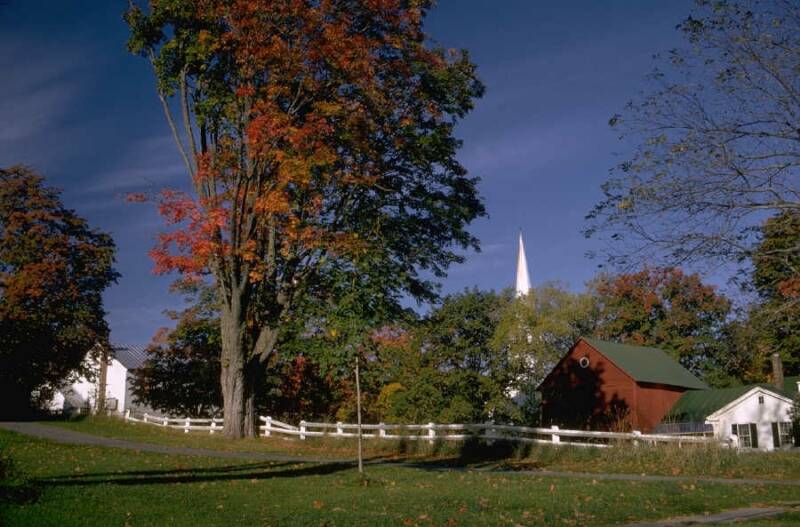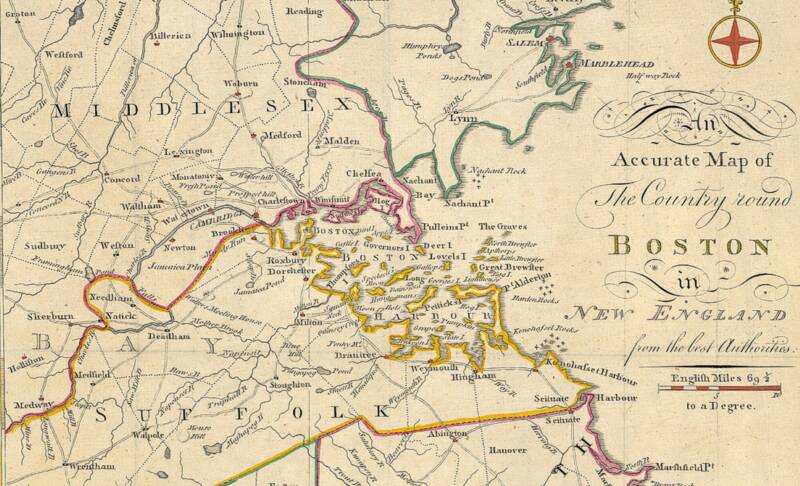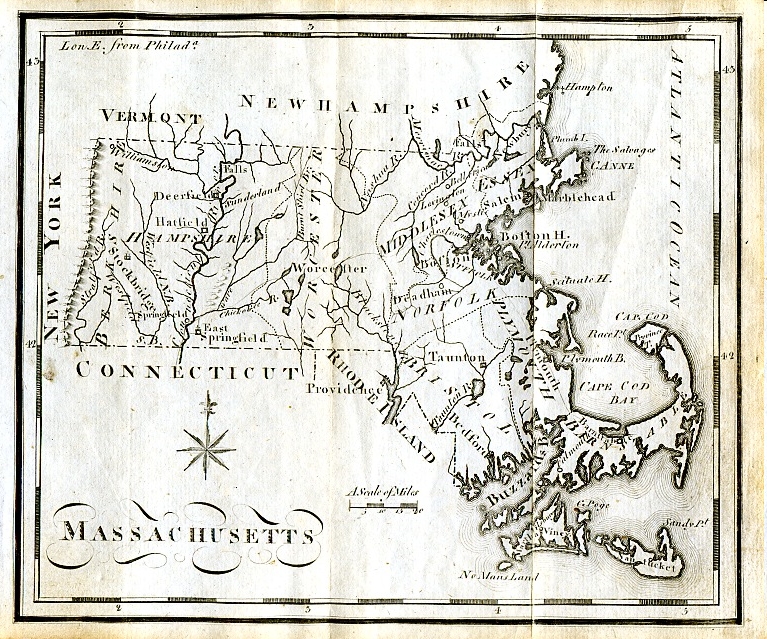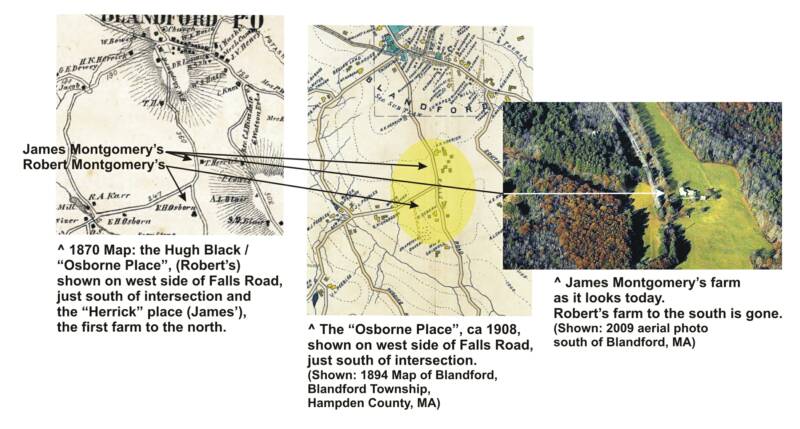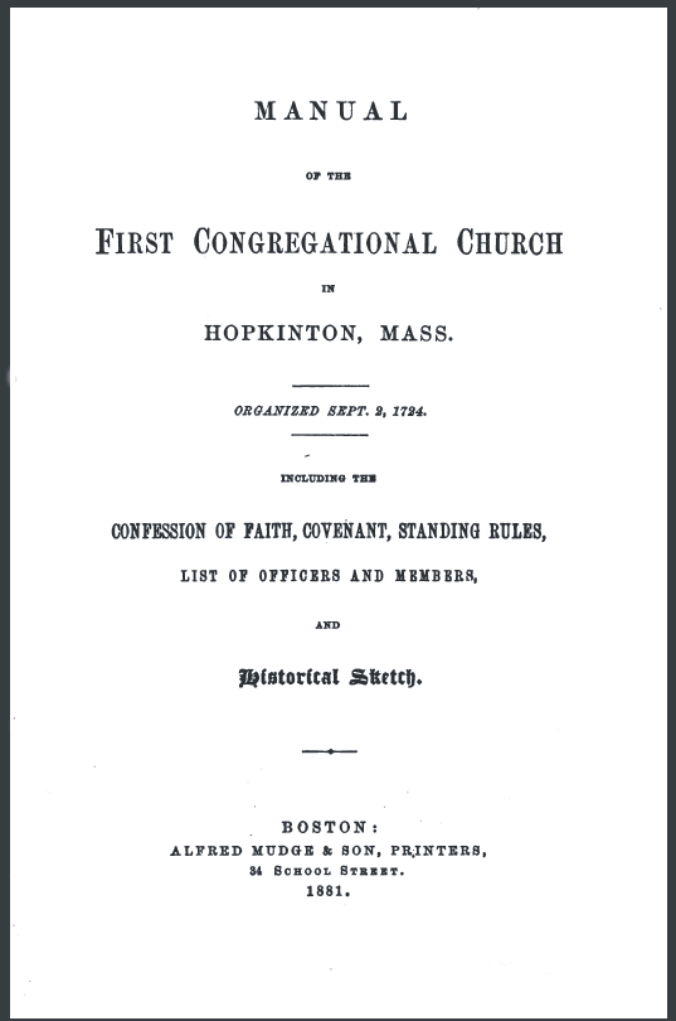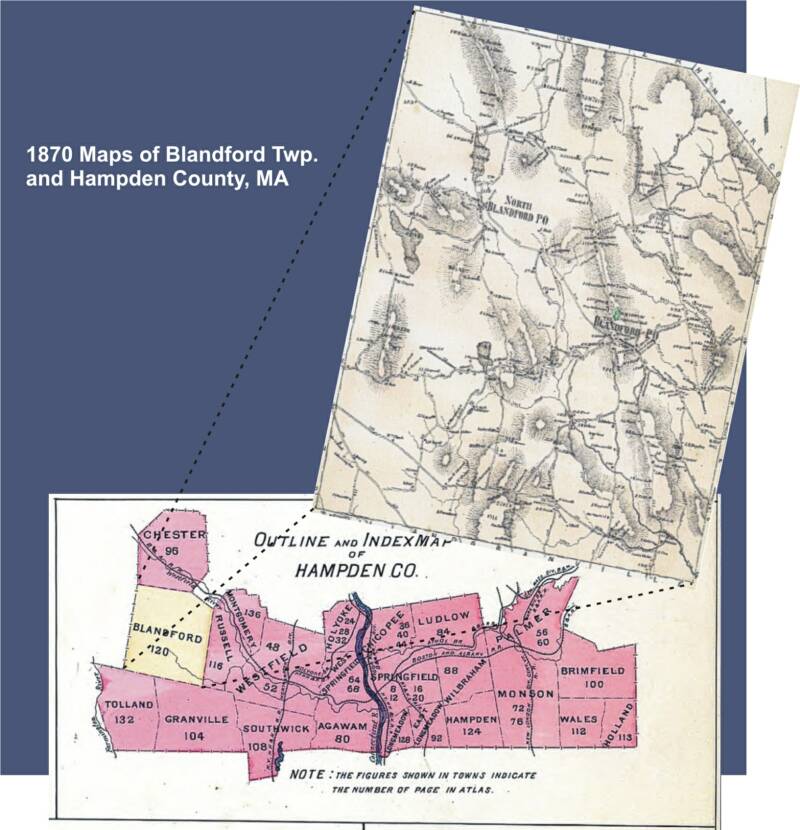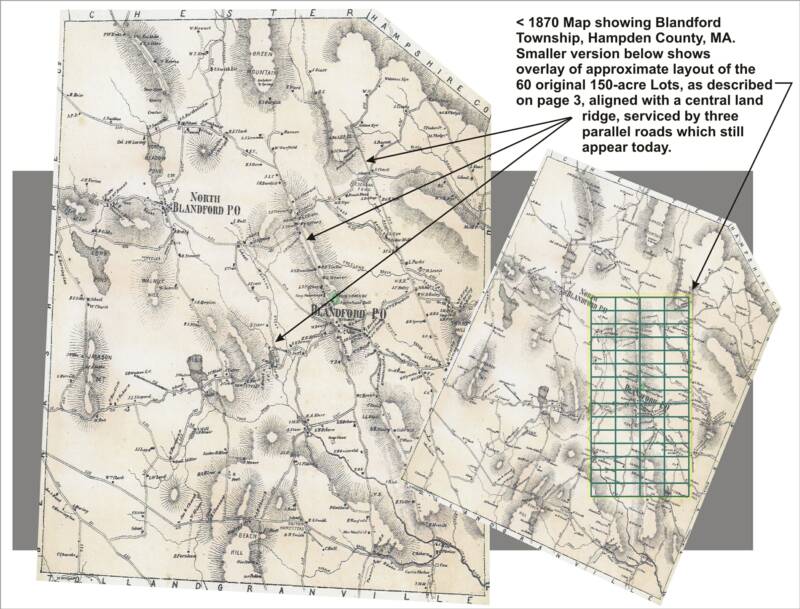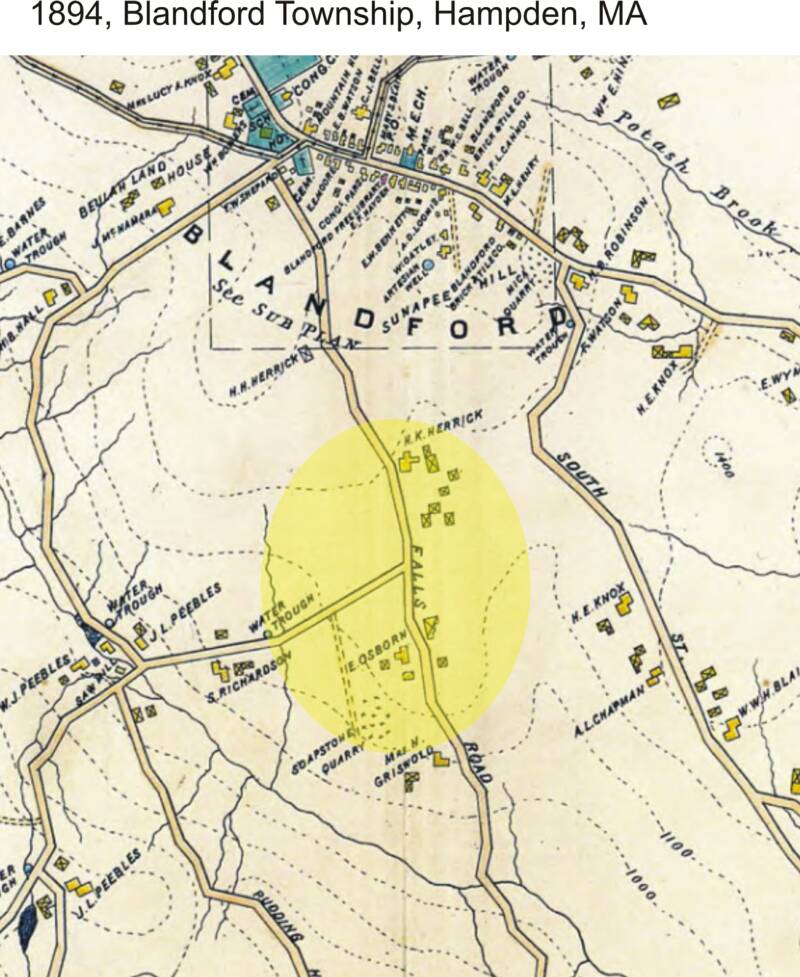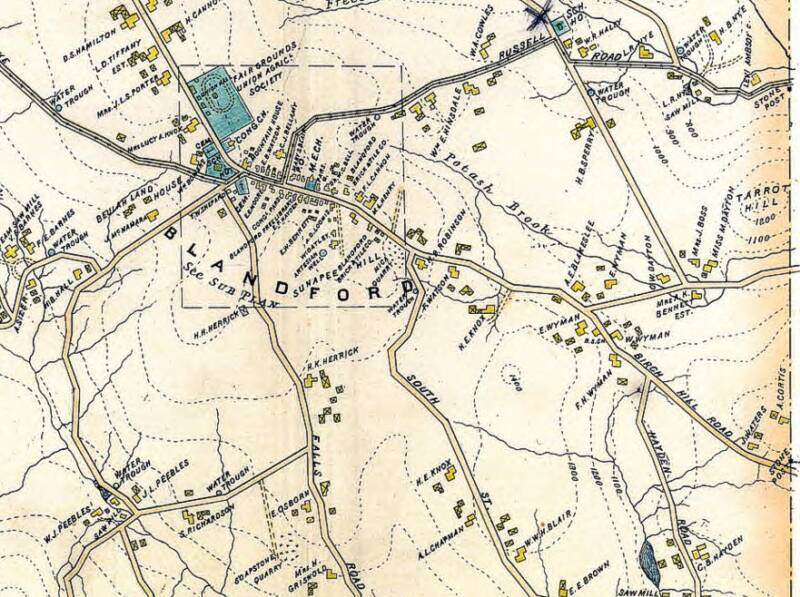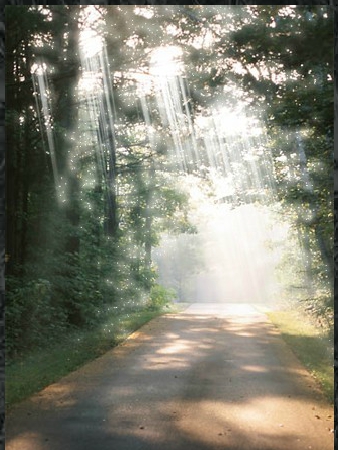William and Mary Aiken Montgomery lived in Hopkinton, Massachusetts, with their six children:
- Anne MONTGOMERY b: 1701 in Ireland
- James MONTGOMERY b: 1702 in Ireland
- John MONTGOMERY b: 1703 in Ireland
- Abigail MONTGOMERY b: 1705 in Ireland
- Agnes MONTGOMERY b: 1710 in Ireland
- Sarah MONTGOMERY b: 22 Sep 1728 in Hopkinton, MA.
William and Mary's descendants grew to move west through, among other places, New Glasgow / Blandford, MA in 1737, Harpersfield, NY in 1785, and on to the Connecticut Western Reserve in 1798-1799.
Their son, James b 1702, would have three children with Mary (Meary)Henry:
- Mary MONTGOMERY
- Mary (Meary) MONTGOMERY
- Robert MONTGOMERY
James would marry a second time in 1750 to Kathren Guess and have two more children:
- Katherine "Cattey" MONTGOMERY
b: abt 1746 in Blandford, MA
- William MONTGOMERY
b: 17 Aug 1752 in Blandford, MA
JAMES MONTGOMERY b. 1702
James lived in Hopkinton, Middlesex County, MA, between 1720 and 1737:
1. In 1724, his father, William Montgomery, was one of fourteen who, with a pastor, established Christ Church at Hopkinton, MA.
2. His sister, Abigail, would marry John Harper in (Christ Church) First Congregational Church of Hopkinton, MA, in 1728. (“In 1728, Rev. Samuel Barrot officiated the wedding of William's daughter, Abigail, to John Harper in the First Congregational Church of Hopkinton, MA”)
3. According to HENRY GENEALOGY, page 72, by William Henry Eldridge, 1915:
Mary Henry, who married James Montgomery, was with her brothers, William Henry and Robert Henry, in Hopkinton, MA, by 1730/31; she married James Montgomery, 23 Jan 1732, in Hopkinton, MA; then the two Henry families and the James Montgomery family all moved to Blandford, MA, ca 1735.
4. According to the STEWART CLAN MAGAZINE, Vol. IV, No. 2, August 1925:
A. “John Stewart probably came from Ireland with the immigrants of 1718.” “He tarried a while in Londonderry, N.H.” and moved to Boxford, later moving to Hopkinton to join his brother (Walter) after the death of his first wife. He there remarried and was a blacksmith. He sold in 1737 to Peter Luce of Boston, “. . . He then removed to Blandford, a Scotch-Irish settlement called New Glasgow, in the western part of the state, in company with others from Hopkinton who had seceded from the church*.” “*On April 9, 1732, the (Congregational) church at Hopkinton voted the acceptance of the Cambridge platform, which gave great offense to the Scotch Presbyterians, and James Montgomery, Robert Cooke, William Henry, Walter Stewart, Robert Huston, John Hamilton, Robert Barrett and others absented themselves from communion and later organized a new church.”
B. Of Samuel Stewart: “. . . later appeared in Blandford, Mass., where in 1759 Samuel had a license as innholder on Beech hill, which adjoined the town of Granville: in 1761 he sold his lots in Blandford to James Montgomery.”
5. According to "Our County and Its People", by By Alfred Minott Copeland, as to the founding of the Village of Blandford:
On the formation of New Glasgow / Blandford, MA: "And whereas the said Christopher Jacob Lawton hath since purchased of the aforesaid commoners and proprietors all their several respective rights of, in and to the aforesaid tract of land except the rights of Josiah Sheldon and the heirs of Joshua Leavitt, deceased, of said Suffield, and hath agreed with Robert Senot, James Freeland, John Osborne, Hugh Harableton, Hugh Black, Comeinne Anderson, James Beard, Joseph Rice, Benjamin Woods, Samuel Karmer, James Montgomery, Armon Hambleton, Israel Gibbs, Robert Henry, Jonathan Boyce, James Wark, Robert Black, John Osborne, John Humbleton, Jeremiah Anderson, William Province, James MacCletick, Samuel Ferguson, James Freeland, Jr., John Houstin, Samuel Cook, Daniel Stone, Robert Houston, David Boyce, John Stuart, William Knox, Samuel Crooks, Samuel Tyger, William Anderson, William Barker, Samuel Wark, Alexander Osborn, Thomas Reed, Matthew Blair, Robert Cook, John Cockhoran, Robert Hambleton, Hugh Hambleton, Daniel Howe, Adam Knox, John Knox, Joseph Freeland, John Stuart, Robert Huston, Samuel Cook, William Dunaghoi, William Province, James Beard, John Cockran, Robert Hambleton, for the settlement of 60 families on said land in such manner and within such time as in the said proviso, in the aforementioned grant is contained and to whom the said Christopher Jacob Lawton hath covenanted to grant the several quantities hereafter mentioned, viz. : To fifty families 120 acres each, to two families 60 acres each, to five families 40 acres each, to one family 30 acres."
"The people named in the above cited deed from Lawton to Brinley, were, for the most part, those who came to Glasgow from Hopkinton, Mass. It came about in this way: A Congregational church was organized in Hopkinton Sept. 2d, 1724. Seven of the original members of the church were Scotch Presbyterians, and five others soon after joined. As nothing was said at the outset about a form of church government, these men could conscientiously assent to the covenant and unite in Christian communion. April 9th, 1731, the church voted "to comply with the Platform of Church Discipline agreed to by the Synod of Churches assembled at Cambridge, 1649, as the rule of their discipline, so far as they apprehended it to be agreeable to the Word of God." This voting the church Congregational gave great offense to the Presbyterians. About ten families withdrew from the communion of the church. They were brought under discipline and eventually several of them excommunicated.
In 1734, they organized a Presbyterian church, built a small meeting-house about one and one-half miles west of the village, near what is known as the Ellery place. Subsequently, on the removal of many of these families to Blandford, this church organization was, by consent of Presbytery, transferred to that town, where it existed till 1800.
The list of membership of the First Congregational Church in Hopkinton contains the names of those who were excommunicated. Of them are the names of Robert Cooke, William Dunaghoi, Robert Hambleton, Robert Huston, Hugh Black and his wife, William Henry, Matthew Blair, Sarah Montgomery, Robert Black, Jane Wark, Rebecca Wark, James Montgomery, John Hambleton, Adam Knox, Israel Gibbs, Mary Gibbs, Israel Walker, Mrs. Robert Sennet, Mrs. Robert Cook, Hugh Hambleton and wife, Walter Steward and wife, Mrs. J. S. (James) Montgomery, Mary Hambleton, and these people went to Blandford, then called New Glasgow, and took their church with them.
Tradition has it that they were promised a church bell from the city of Glasgow if they would call the town Glasgow, and continue that name.
6. According to: "Genealogical and Personal Memoirs Relating to the Families of the State of Massachusetts", by William Richard Cutter, William Frederick Adams, MA, 1910:
"In 1759 was the first year a school was taught by a female, as appears by the records: "Granted six pounds for schooling this year. Voted, Chosen Isreal Gibbs, James Montgomery, William Michel, to be committee to Hiar a School Deame, and so Dispurs the money Granded by the town to Defra the charges of the schooling, and to employ a school master when they think it will be Best for the town this year."
"In those days farm tools were of a very rude and primitive type. The method of harvesting was curious, and tradition states that the laborers in the "North Meadow" - and especially Isreal Gibbs - used a straight stick, which answered a three-fold purpose, that is as swath, rake and fork, and it was so awkward that it was then, and even now anything that is coarse, is called a "Gibb-sey".
". . . it appears that . . . that those Scotch settlers were as fond of spirits as their Anglo Saxcon neighbors. In 1756 it was voted, "That the town shall pay . . . the first cost for the Rum and sugar the Council shall Need while they Sit Hear.""
Hopkinton & Blandford, MA . . .
James Montgomery
7. According to the book, "Taverns and Turnpikes of Blandford, MA 1733-1833" in describing the early settlement of Blandford, MA, tells the following about a very early Blandford road / rood / turnpike, "The road had been originally laid out coincident with the division line between the two tiers of first division home lots, but had to be shifted somewhat irregularly to the westward in order to avoid the ravine and brook running through it. The road is now spoken of sometimes as Falls road. A very early town lay-out of the road was on this wise: "Put to voat to see if the Town will establish the Road South of the meeting hous beginning at the Northwest Corner of the Rev. Mr Mortons ortcherd as the road now goes to the west of the widoe Hamiltons House from thence as the road now Goes through widow Provans Land from thence as the Road now gos through the Land of James Campbls from thence through James and Robert M' Gomarys Land.
Said Rood to be three Rods wid.
In 1771, this road was somewhat minutely described in a county lay-out. On the course from Granville, after crossing "Pebbles Brook", it (the turnpike) was described as extending to a great rock in the middle of the River. Then climbing the steep hill, it ran by Robert Montgomery's fence to a heap of stones near a path in the field about 7 rods west of Montgomery's house, then north 42 perch (perch = 5-1/2 yards) to a great red oak six rods west of James Montgomery's.
The first Montgomery lived on the Lot first owned by Hugh Black (known in 1908 as the Osborne place). James occupied the next lot to the north. Not long after this, Robert Montgomery sold out his possessions there and moved up to Beech Hill, where he was living in the eighties (1780's) and carried on a retail license. James Montgomery had bought his lot of 1761 of Samuel Stewart who had an innholder's license . . ." Many times in these early records the surname was spelled, "Mt Gomery", and "Mongumery", etc.
From lists of Blandford Selectmen:
1747 - David Boies, Robert Wilson, Jas. Montgomery, John Stewart, John Hamilton
1758 - Robert Henry, John Knox, David Black, John Boies, James Montgomery
With his first wife, Mary Henry Montgomery, one of his children was born in Hopkinton, MA, and two in Blandford, MA. Of his second marriage to Kathren Guess, two children were born in Blandford, MA.
In this tract of land the lots for settlers were laid out. Mr. Gibbs said that, "The settlers selected their farm lots, and the names of several families who obtained farms on the west side of the town street, are left on record, viz. : Messrs. Black, Reed, McClinton, Taggart, Brown, Anderson, Hamilton, Wells, Blair, Stewart, Montgomery, Boise, Ferguson, Campbell, Wilson, Sennett, Young, Knox and Gibbs. The majority of the above-named persons became permanent residents upon the lots they drew."
V
A Montgomery Family Genealogy
As recorded and developed by W.J. Montgomery
